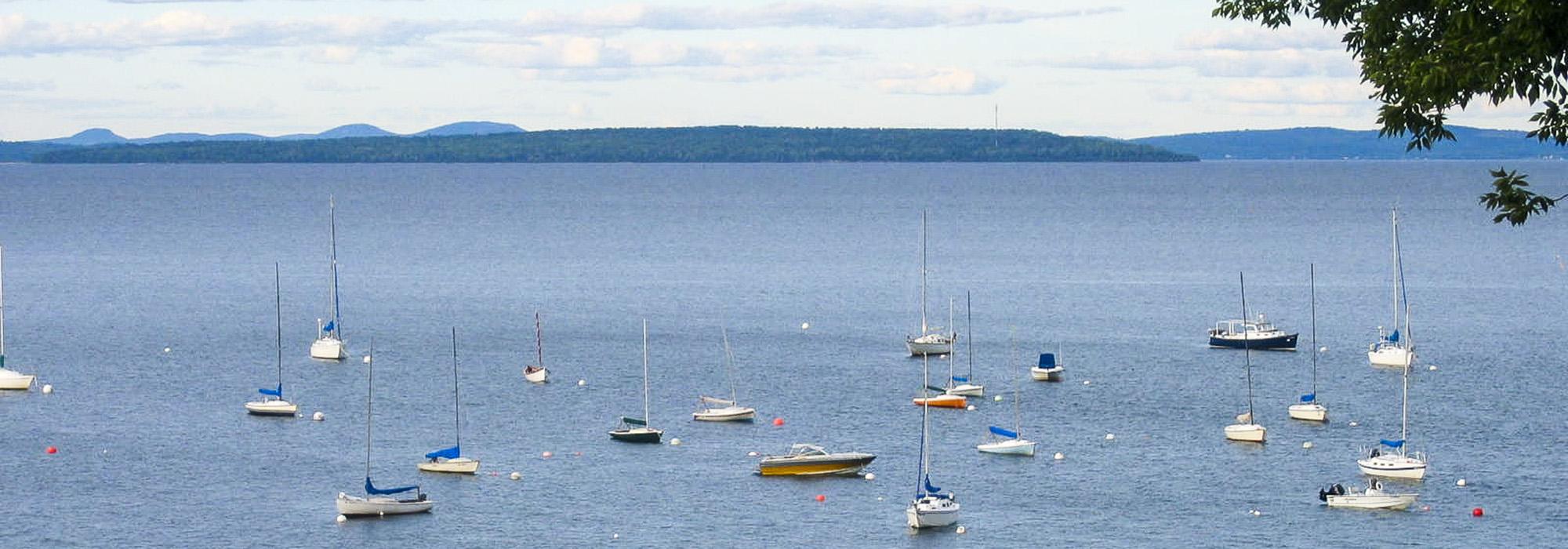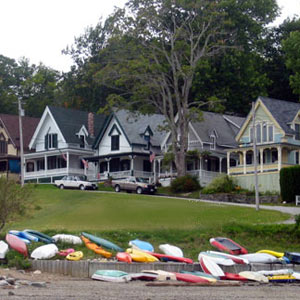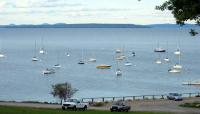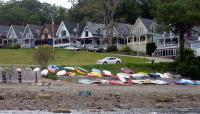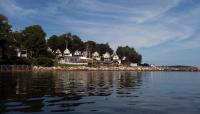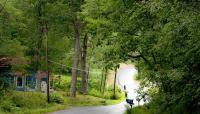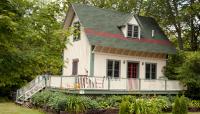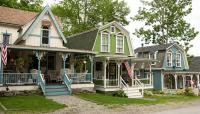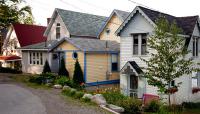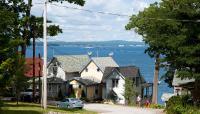Landscape Information
The Northport Wesleyan Grove Camp Meeting grounds are among approximately forty sites in Maine where Methodists congregated to renew their faith and recruit followers in the 19th century. In 1850 the Northport Campground Association obtained 28 oceanfront acres where congregants camped in tents surrounding an outdoor meeting space overlooking Penobscot Bay. The property was enlarged and permanently developed following the Civil War, with the construction of roads, parks, hotels, a wharf, an auditorium, theater, and numerous summer cottages. The community is laid out on a tight circuit of narrow roads lined with deciduous trees. The street pattern is irregular, with loops, curves, and straight segments that respond to the topography rather than aligning in a grid. The small cottages are set close together at a uniform distance from the roads, with small patches of lawn and many with large porches to compensate for the small amount of private outdoor space. Inspired by Gothic Revival architecture, the cottages have similar materials, ornamental details, and bright colors, which along with their spacing and relationship to the street create a distinct neighborhood character. Neighborhood common spaces consist of beaches and open lawns dotted with mature trees that offer unobstructed ocean views.
Reflecting a transition from a religious mission to a more secular, recreational one, the camp was renamed Bayside by the early 20th century. Today, 158 cottages and other structures remain with only minor alterations made. The Bayside Historic District was listed in the National Register of Historic Places in 1996.



